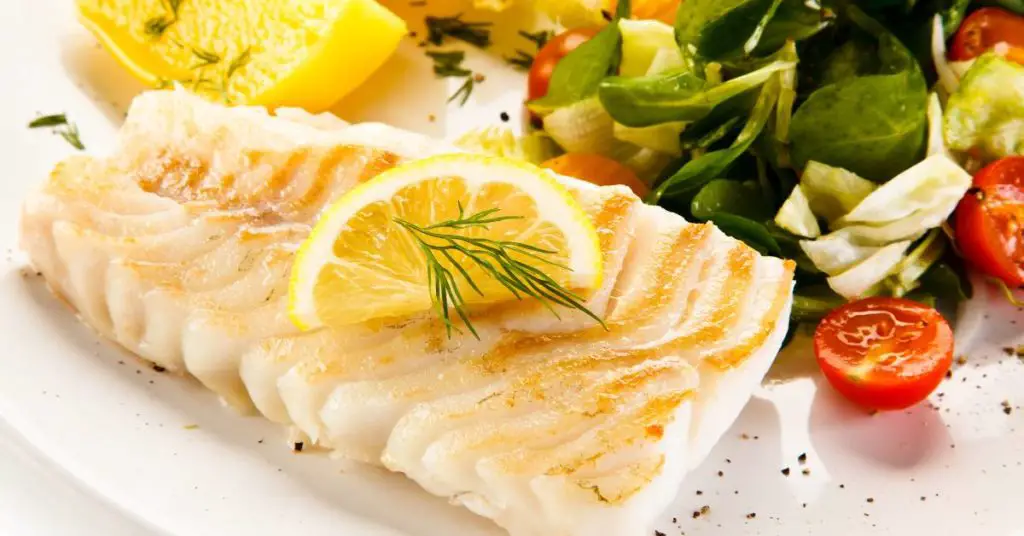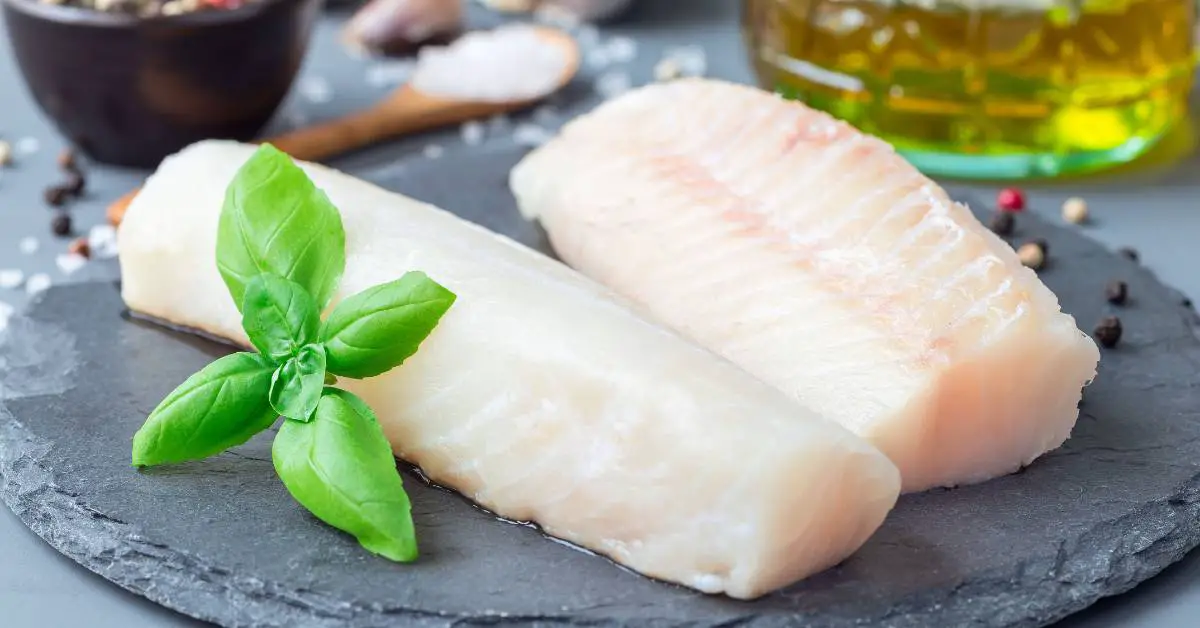Is cod low histamine? As a physician who has worked with clients with histamine intolerance, diet is a critical aspect of histamine intolerance mangaement. Dietary management is the most reliable way to manage the symptoms of histamine intolerance.
Histamine is a compound naturally present in our bodies and is also in some of the foods we eat, even healthy ones. Histamine regulates countless bodily functions (as a signaling molecule) and plays a key role in the body’s inflammatory response.
Therefore, histamine plays an important role in helping you stay healthy.
Still, when histamine levels exceed your body’s capacity to break it down, it can lead to the unpleasant and diverse symptoms of histamine intolerance. Histamine intolerance is caused by problems metabolizing and breaking down histamine. (6)
The Histamine Content of Cod
That’s why you need to be aware of sources of histamine in foods and explore specific options that lower your body’s histamine load. This, of course, means following a low-histamine diet and avoiding histamine-rich foods.
So, let’s embark on a journey to uncover the truth: Is cod a low histamine choice and is it safe to eat if you have histamine intolerance?
Cod is a seafood choice with relatively low histamine levels compared to other fish, but that doesn’t mean it’s always histamine free.
Yet it can still be a nutritious and satisfying option if you watch your portions, buy the freshest sources, and consume it at its peak of freshness.
The Crucial Role of Cod Freshness in Histamine Levels
Various factors can influence the histamine content of cod. Factors such as the freshness of the fish, storage conditions, and how it’s handled and processed all play a role in determining the histamine content.
It’s these factors that determine whether that piece of fish will raise your histamine level and trigger histamine intolerance symptoms.
Understanding these factors helps you make informed decisions about the cod you consume. It will also allow you to take necessary precautions to optimize its potential as a low-histamine food choice when you follow a low-histamine diet.

Nutritional Powerhouse: Cod as a Low-Histamine, High-Nutrient Option
Fresh cod doesn’t just shine in the low-histamine realm—it offers a wealth of nutritional benefits. Packed with high-quality protein, omega-3 fatty acids, and essential nutrients like vitamin B12 and selenium, cod is a nutritional powerhouse. (2) These elements support overall health, brain function, and heart health, making cod a catch worth savoring.
Cod can be a viable choice when you’re looking for high-protein foods that are nutritious. With its relatively lower histamine levels, the freshest cod offers an opportunity to enjoy seafood without exacerbating histamine sensitivity symptoms.
The Freshness Factor: Unraveling How Handling and Storage Affect Cod’s Histamine Levels
So, how can you lower histamine levels in seafood, like cod? If you catch your own cod, temperature control is crucial. Keep fish chilled below 40°F at all times, from the moment it’s caught to the moment you cook it. This will help maintain quality and reduce the histamine content.
Cooking or retorting the fish can deactivate the bacteria and their enzymes, but unfortunately, heating or freezing won’t eliminate the histamine that’s already there.(3) The key to low histamine levels in frozen fish is choosing varieties that are frozen as quickly as possible after being harvested.
Optimal Storage Techniques: Minimizing Histamine Content in Cod
If you’re following a low-histamine diet, how you store seafood, including cod, matters. Heat is the enemy, as it creates conditions where histamine-producing bacteria thrive.
A study found that bacteria produce histamine from the amino acid histidine at temperatures above 16°C (60°F) during nonrefrigerated storage.(5) Poor handling and improper storage can cause temperature increases that boost histamine production and increase the histamine content of cod and other seafood.
Remember, the longer the fish lingers in a “fresh” and chilled state, the higher the histamine levels will be. So, aim for fish that’s frozen at sea or within 8 hours of being caught. This ensures swift freezing and a lower histamine content.
Also, consider buying wild-caught cod. This is a way to support sustainable fishing practices, but it can also help reduce histamine levels. So, keep an eye out for those wild-caught options when browsing through the freezer aisle.
Making Informed Choices: Balancing Histamine Levels in Fresh and Frozen Cod
In terms of histamine intolerance management, iconsume only the freshest cod. Also, know that some fresh samples may contain enough histamine to trigger histamine intolerance symptoms. One study investigated histamine levels in fish and fish products from Poland from 2014 to 2018.
The findings revealed that 14.1% of raw fish samples, 29% of smoked fish samples, 22% of canned fish samples, and a staggering 93.8% of marinated fish samples tested positive for histamine. Some samples exceeded the threshold of 100 mg/kg, posing potential health risks. (1)
But remember, this study tested a variety of types of fish, not just cod. The cod samples they tested either contained no histamine or low levels of it. The fresher the fish and the faster it’s placed on ice, the lower its histamine content will be .As mentioned, frozen cod is usually low in histamine too.

Navigating Histamine Traps: A Cautionary Tale About Processed Fish
Canned, smoked, marinated, salted, or dried fish usually have a high histamine content due to storage and aging. So, it’s best to avoid all forms of fish that are dried, salted, marinated, or smoked. This includes cod. Histamine levels tend to skyrocket during storage and aging, casting a shadow over these tempting treats.
So, opt for the fresher, less processed forms of cod to savor the pure essence of this delectable fish. Avoid canned, smoked, marinated, salted, or dried cod, as histamine levels spike during storage and aging.
Also, find out whether fish oil is low in histamine.
Incorporating Cod into a Low-Histamine Diet
Now that we’ve established cod as a low-histamine option, let’s explore how to incorporate it into a low-histamine diet. There are numerous delicious ways to prepare cod.
Pair it with fresh low-histamine vegetables, herbs, and spices that are also low in histamine to create flavorful and satisfying meals. Keep in mind that some spices are high histamine and you should avoid those and opt for low-histamine spices instead.
Watch how you prepare it too. Based on one study, you should avoid grilling cod. The research found that grilled seafood had a higher histamine content than raw or boiled seafood. The study found that grilling also increased the histamine content of meat. Also, find out about high-histamine meat you should limit in your diet.
By incorporating cod into your low-histamine diet, you can expand your culinary repertoire while keeping histamine levels in check. Ensure that it’s fresh, stored at a lower enough temperature, and eat it quickly.
Leveraging Cod’s Potential as a Low-Histamine Food Choice
Is cod low histamine? Remember, while cod may be a suitable for a low-histamine diet, but individual tolerances vary. Listen to your body and consult with a healthcare professional or registered dietitian to determine the best approach for your specific dietary needs.
Keeping a food diary is a must if you have histamine intolerance. By meticulously documenting what you consume, you gain valuable insights into the intricate relationship between your diet and symptoms.
This personal record allows you to identify potential triggers, recognize patterns, and make informed decisions about your food choices.
With a food diary, you can track not only the specific foods you consume but also factors like portion sizes, preparation methods, and even the time of day. By keeping a record of what you eat on a low-histamine diet and how your body responds, you empower yourself to take control of your health and embark on a journey of self-discovery.
Plus, you’ll lower your body’s histamine level and reduce histamine intolerance symptoms. Explore further: Is garlic a safe food if you have histamine intolerance?
References:
- Pawul-Gruba M, Osek J. Identification of Histamine in Fish and Fish Products in Poland During 2014-2018. J Vet Res. 2021 Dec 2;65(4):483-486. doi: 10.2478/jvetres-2021-0066. PMID: 35112003; PMCID: PMC8775728.
- “Is Cod Healthy? Nutrition, Calories, Benefits, and More.” 23 Jan. 2019, https://www.healthline.com/nutrition/is-cod-healthy.
- “Analyzing for Histamine in Seafood – IFT.org.” 01 Feb. 2010, https://www.ift.org/news-and-publications/food-technology-magazine/issues/2010/february/columns/food-safety-and-quality.
- “Sampling and Analysis of Histamine in Fish Products from ….” 10 Sept. 2018, https://www.gavinpublishers.com/article/view/sampling-and-analysis-of-histamine-in-fish-products-from-local-northern-california-markets.
- Sampling and Analysis of Histamine in Fish Products from Local Northern California Markets. (2023). Retrieved 13 June 2023, from https://www.gavinpublishers.com/article/view/sampling-and-analysis-of-histamine-in-fish-products-from-local-northern-california-markets
- Comas-Basté O, Sánchez-Pérez S, Veciana-Nogués MT, Latorre-Moratalla M, Vidal-Carou MDC. Histamine Intolerance: The Current State of the Art. Biomolecules. 2020 Aug 14;10(8):1181. doi: 10.3390/biom10081181. PMID: 32824107; PMCID: PMC7463562.
- Chung BY, Park SY, Byun YS, Son JH, Choi YW, Cho YS, Kim HO, Park CW. Effect of Different Cooking Methods on Histamine Levels in Selected Foods. Ann Dermatol. 2017 Dec;29(6):706-714. doi: 10.5021/ad.2017.29.6.706. Epub 2017 Oct 30. PMID: 29200758; PMCID: PMC5705351.

